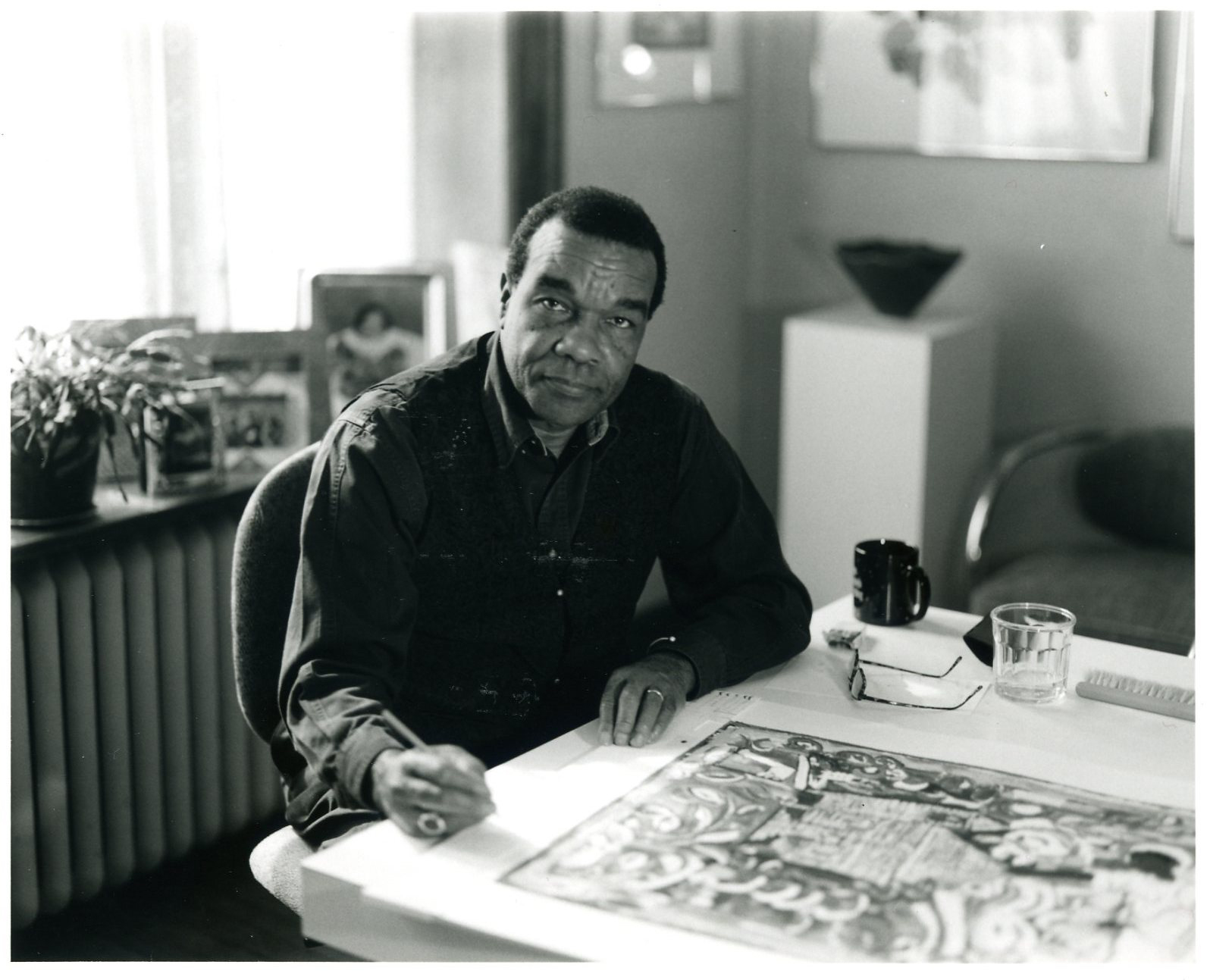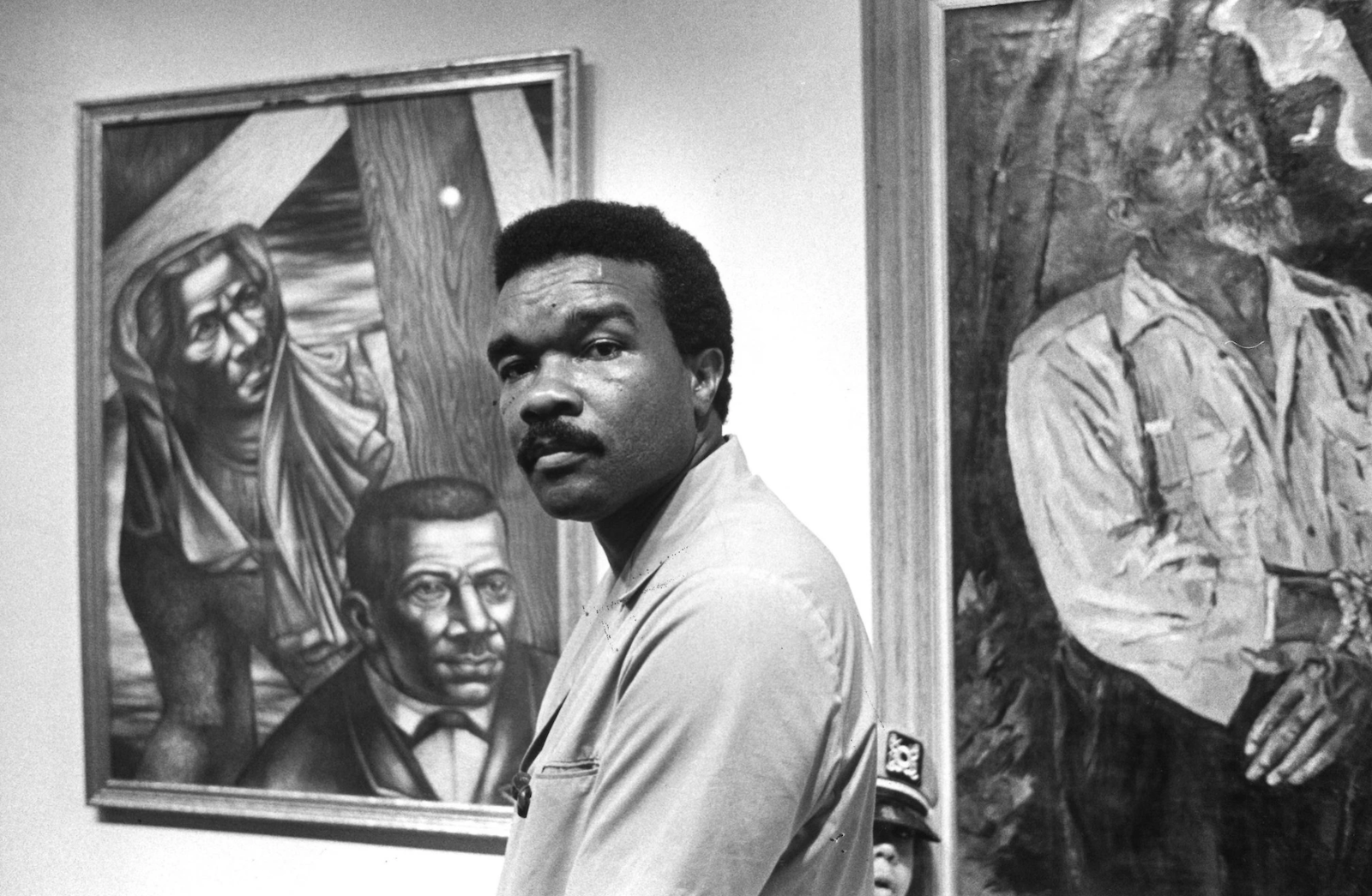The David C. Driskell Papers - Fall 2020
July 29, 2020

David C. Driskell Center to Present The David C. Driskell Papers
Image Credit:
© Carol Harrison
Gift of Mr. and Mrs. Orrin Harrison III
Contact: Ms. Dorit Yaron
Title: Deputy Director
Phone: 301-405-6835, Email: dyaron@umd.edu
The David C. Driskell Center for the Study of the Visual Arts and Culture of African Americans and the African Diaspora at the University of Maryland is proud to announce its fall 2020 exhibition, The David C. Driskell Papers. This virtual exhibition is on display on the Driskell Center’s website starting Tuesday, September 8th 2020.
View the Exhibition Here
ABOUT THE EXHIBITION
This exhibition of The David C. Driskell Papers is part of the Driskell Center’s yearlong celebration of the life and achievements of David C. Driskell, who passed away on April 1st 2020 at the age of 88.
"The David C. Driskell Papers," David C. Driskell’s archive of African American art, was assembled over more than six decades in which Driskell established himself as a major artist, curator, scholar, educator, and mentor. Professor Driskell donated the collection to the Driskell Center in 2011, establishing a resource for generations of scholars, educators, and artists. Much of the material comprising the collection is from the years 1960 to 2000, and traces the evolution of African American art and African American artists’ recognition as well as the expansion of scholarship on this subject during that period.
The roughly 50,000 items which comprise the collection include journal entries, writings, curatorial notes, exhibition catalogues, photographs, audio and video material, and ephemera. Highlights in the exhibition include correspondences with Romare Bearden, Jacob Lawrence, and Georgia O’Keeffe; photographs from Driskell’s earliest solo exhibitions; and Driskell’s notes on Two Centuries of Black American Art, his signature accomplishment as a curator.
The virtual exhibition includes over 110 items including artworks by Driskell; it is divided by decades into five galleries.
- The 1950s: During this decade, David C. Driskell established himself as an artist and academic with his first solo exhibitions and his first teaching post at Talladega College in Alabama.
- The 1960s: David C. Driskell moved to Howard University in Washington, D.C., and eventually to Fisk University in Nashville, Tennessee, where he solidified his reputation as a scholar.
- The 1970s: David C. Driskell continued to travel extensively, lecturing widely and deepening his connections with artists around the world. As a curator and author, Two Centuries of Black American Art and its corresponding catalogue introduced Americans and the world to a hidden heritage and helped to define the field of African American art appreciation and scholarship. The exhibition was organized by the Los Angeles County Museum of Art (LACMA) in California in 1976 and traveled to additional venues around the country. In 1977, Driskell joined the Department of Art at the University of Maryland, College Park and was appointed department chair the following year.
- The 1980s: As an internationally celebrated artist, scholar, curator, and collector, David C. Driskell was involved in four major exhibitions, including Hidden Heritage: Afro-American Art, 1800-1950.
- The 1990s and the 21st Century: These decades brought greater recognition to Driskell’s achievements. In 1998, the same year as his retirement from the University of Maryland, Narratives of African American Art and Identity: The David C. Driskell Collection opened at the University of Maryland Art Gallery in College Park and traveled to four museums around the country. In 2000, Driskell was awarded the National Humanities Medal by President Clinton. The following year, the David C. Driskell Center was founded.
Early in his career, David C. Driskell aspired to create an archive of his papers. He was inspired by James V. Herring—an artist and founder of the Howard University Department of Art in 1921 and founder of the Barnett-Aden Gallery in Washington, D.C., in 1943— who would regale his former students with stories of his career as an archivist.
“These things piqued my interest and I thought, well, someday I’d like to collect materials…and so I began collecting letters, I began writing to people when I was a senior at Howard University; to important people, getting to know them, people that I’d been introduced to…the audacity, one might say.”
—David C. Driskell, 2009
Speaking about the significance of "The David C. Driskell Papers," Prof. Curlee R. Holton, the David C. Driskell Center's Director, observed that:
“The David C. Driskell Papers reveal processes which Prof. Driskell used to establish the intellectual foundation of the study of the artistic production of African American artists. These artists, often in the shadows of our collective history, were brought into the foreground and illuminated by Prof. Driskell's research and promotion. He celebrated the labor and dedication of these artists and their important cultural contributions. The recognition of this artistic legacy has grown over the years due to Prof. Driskell's groundbreaking research and documentation.”
—Curlee Raven Holton, 2020
In conjunction with the exhibition, the Driskell Center is planning several events, including a lecture by Driskell’s biographer, Julie L. McGee, who wrote “David C. Driskell: Artist and Scholar," published in 2006 by Pomegranate Communications, Inc.; and a panel discussion with Driskell’s colleagues. Those events will be held online and dates will be announced soon.


